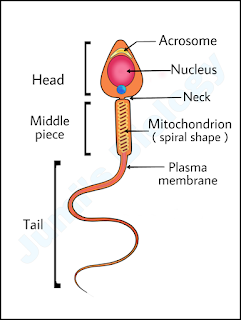Drug and Alcohol Abuse: Human Health and Diseases ||Class 12 Biology
Drug: A drug is any substance that causes a change in an organisms physiology or psychology when consumed. Drug is given people in order to treat or prevent an illness or disease.
Drug abuse: Drug abuse is use of a drug in amounts or by methods which are harmful to the individual or other.
Alcohol: It has an anaesthetic effect on nervous system affecting cerebrum, cerebellum and other parts.
Effects of alcohol include peptic ulcer, gastric carcinoma, hepatitis, liver failure, euphoria etc.
The source of drugs are mainly folwering plants and some of the fungi etc. Drugs fall into following categories:
Opioids: These are the drugs which bind to the specific opioid receptors present in our central nervous system. It is obtained from unripe capsule of Papaver somniferum or Poppy plant. They may be natural, e.g. opium, morphine, codeine, semisynthetic, e.g. heroin, smack and synthetic, e.g. pethidine, methadone. These have narcotic, analgesic, sedative and astringent effects.
Heroin is a common opioid called as smack. It is chemically diacetylmorphine which is white, odourless, bitter crystalline compound.
Heroin is obtained from acetylation of morphine, taken by snorting and injection. Heroin is a depressant which slows down the body functions. Morphine is an effective, sedative and pain killer.
Cannabinoids: These are a group of chemicals which interacts with the Cannabinoid receptors present mainly in the brain. Cannabinoids are obtained from the leaves and flowering parts of plant Cannabis sativa. Leaves, flower tops, resins of Cannabis sativa in various combinations produce charas, ganja, marijuana and bhang. These are either inhaled or taken by injecting orally. These drugs affect cardiovascular system of the body.
Coca Alkaloids or Cocaine: It is commonly known as coke or crack. It has a potent stimulating action on Central nervous system, producing a sense of euphoria and increased energy. Cocaine is derived from the leaves and young branches of a South American plant called Erythroxylum coca or coca plant. Its mode of intake is sniffing and snorting. It is a strong stimulant that interferes with the transport of neurotransmitter, dopamine. When taken in high doses caused headache, convulsions, hallucination and death due to cardiovascular or respiratory failure.
Hallucinogens: These are psychedelic drugs because of their effect on the cerebrum and sense organs.
These are obtained from the plants like Aptropa belladona and Datura sp. Lysergic acid diethylamide (LSD) is derived from the fruiting bodies fungus Claviceps purpurea or ergot fungus. Effects of thses drugs occur on thoughts, feelings and perceptions of an individual. Medically, these are prescribed to cope with depression and insomnia.
Tobacco: It contains nicotine which stimulates the adrenal gland to release adrenaline and nor adrenaline which in turn increases the blood pressure and heart rate. It is obtained from tobacco plant whose mode of intake is smoking, chewing or used as a snuff.
Tobacco can induce lung cancer, bronchitis, amphysema, coronary heart disease, cancer of throat, oral cancer and cancer of urinary bladder etc.
Smoking of tobacco leads to the increase in the content of carbon monoxide in the blood which reduces the concentration of haem-bound oxygen. This leads to oxygen deficiency in the body.




Comments
Post a Comment
If you have any doubts,please let me know